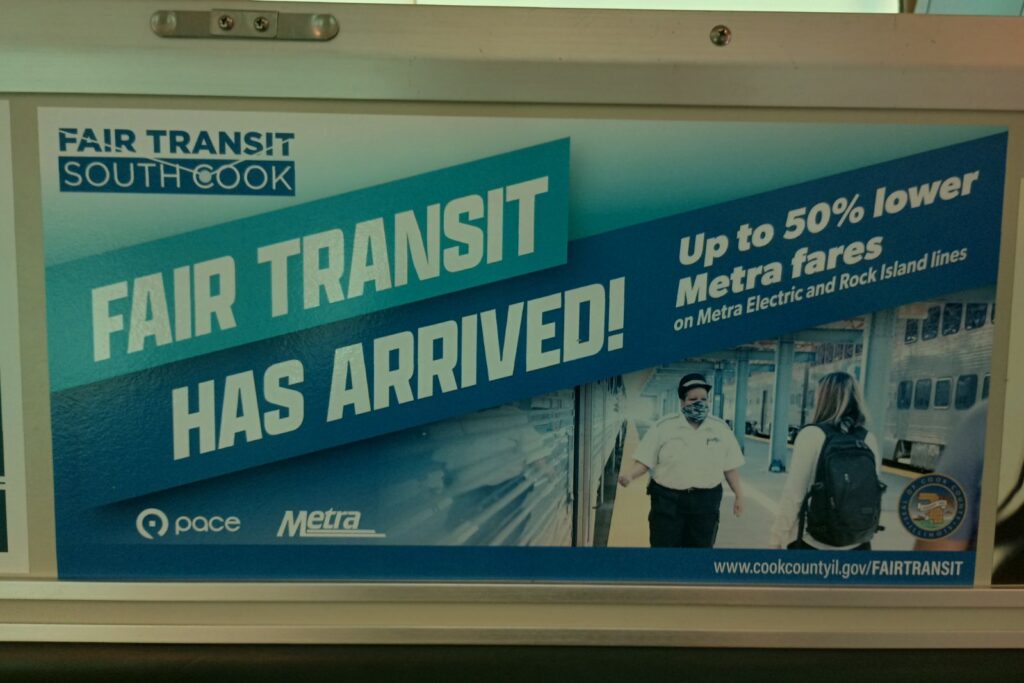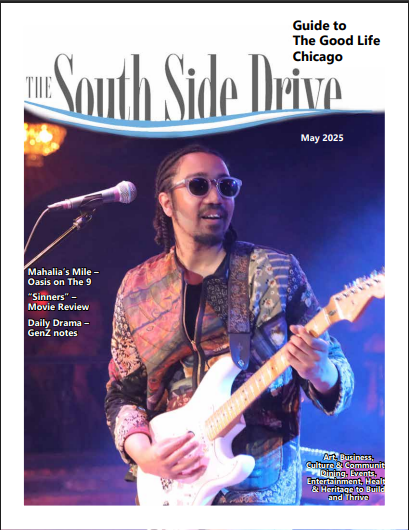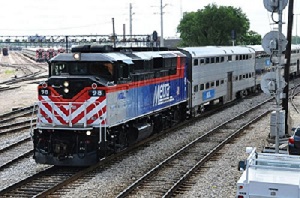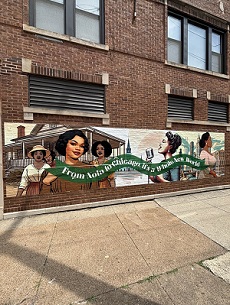Here’s a quick quiz to assess your knowledge of public transportation options on the Southeast Side: Which of these two public transit providers offers the quickest, most comfortable, most convenient, and least expensive way to travel from South Shore/South Chicago to Millenium Park?
A) Chicago Transit Authority (CTA) Express Bus lines (J14, 6, 26), or
B) Metra Electric Train.
Okay, I admit this is a trick question. When it comes to travel time, comfort, and convenience the answer could be a subjective one that depends on the time of day you travel, exactly where you start from, and your eventual downtown destination. But I was pleasantly surprised to learn the cheapest way for me to get downtown is to catch the Metra Electric train from one of the five stations in South Shore (71st & Stony Island Ave. and Jeffery Blvd., 71st, 75th, and 79th & Exchange Ave.). In fact, the fare for a one-way trip from anywhere along the Metra Electric train running from 93rd and South Chicago Ave through South Shore, Woodlawn, and Bronzeville to Millenium Station (Randolph St. & Michigan Ave.) is two dollars, which is twenty-five cents less than the one-way trip on the CTA. At least for now. The Fair Transit South Cook is a partnership between Cook County, Metra and Pace Suburban Bus that initially sought to both reduce automobile traffic and improve transportation options for residents of the South Side and south suburbs. While I’m undoubtedly grateful to the motorists of Cook County for kicking-in on my Metra fare (to the tune of $30M in County funds to reimburse Metra for fare differences), I’m disappointed I’m only now learning about Fair Transit South Cook. Alas, the three-year pilot program along with the fifty percent reduced fare will be discontinued at the end of January 2024. Of course, the fifty percent reduction will continue to be available (as it always has), to seniors, active-duty military, and students K-thru 12. Yet, according to Metra Director of Communications, Michael Gillis, “there has been no announcement yet about extending or evolving the pilot beyond that [Jan. ‘24] date.” The increase in the number of Metra Electric trains, implemented during the pilot program as part of the overall strategy to restore pre-pandemic service, was funded by Metra with the help of federal COVID 19 relief funds, Gillis said.
So now let’s address a few differences I found using Metra starting with comfort. Metra Electric trains are more comfortable than CTA buses and “El” trains. When I ride, no question, I will find a nice window seat in a four-person section all to myself. There are electrical outlets to charge a phone or power a laptop. There are clean, functioning toilets and multiple conductors on the Metra means it’s not likely that a person can get on the train without paying the fare. It also means there is zero chance of somebody smoking a blunt (which is becoming a frequent practice on the CTA). When departing the train at Millenium Station passengers don’t immediately go outside, and the short walk through the station gives them a chance to brace for whatever the weather has in store.

The quickness/convenience factor depends on where
you start and where you finish. Unfortunately, if your feet (or free Uber-style
ride from a friend) can’t get you back & forth from a Metra station, the
CTA won’t be much help. There are currently no combined Metra/CTA tickets, except
for Metra monthly unlimited pass ($70 for Metra pass, $30 additional for CTA
pass).
“Fare integration remains a goal,” Metra’s Gillis
said, “but it is complicated and expensive due to the differences between CTA, Pace
and Metra fare systems.” Certainly, a big plus for riding the CTA is one price
for a ride, two transfers anywhere-to-anywhere on the system, and CTA passes
are good on Pace, and Pace passes are good on the CTA.
Metra
operates on a “zone system” based on the distance from Millenium Station, with
increasing fare prices for travelling between multiple zones. But creating a unified
Metra/CTA pass could happen. The Chicago Metropolitan Agency for Planning released
a memorandum just last month calling on the State of Illinois to enact measures
for the region’s transit systems to unify fare pricing and systems.
Because the pandemic caused a dramatic drop in Metra
ridership right before the pilot program was implemented it’s hard to know if
the reduced fares and increased service alone encouraged more people to use
Metra. Instead, a report issued by the County after the first year of the pilot
looked at whether ridership levels on trains through South Cook (Metra Electric
and Rock Island lines) recovered faster than other areas of Cook County or Metra overall, averaging “32% faster recovery rate than the system,” according
to the report. It was also noted that effects of the pandemic on Metra
ridership may have been worked out by the time the pilot program ends, with the
possibility that a final report could determine if the pilot did, in fact, help
more of South Cook’s residents (particularly lower income) use Metra.
One way to illustrate the
acceptance of Fair Transit South Cook among the region’s commuters is the fact
that County has kicked in an additional $10M to cover Metra fare reimbursement through
the pilot program’s end in January 2024. At its July meeting the Metra board
agreed to forego up to $2M in reimbursements.
The fact
that Metra has recently put up a poster used back in 2021 to announce the pilot
program and fifty fare reduction at my South Shore Metra station, means they
may still want me and other South Shore riders as advocates. I have also noticed
similar signs on the trains. Hopefully, this will remind (or inform) my fellow
Metra Electric train riders that this two-dollar, one-way trip we’ve been enjoying is about to
get more expensive and we should urge our Cook County Board (with maybe more
help from Metra and the State of Illinois) to do what they can to keep it.






